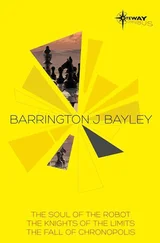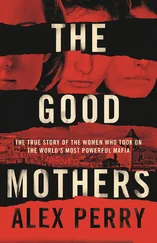Rahel Rivera Godoy-Benesch - The Production of Lateness
Здесь есть возможность читать онлайн «Rahel Rivera Godoy-Benesch - The Production of Lateness» — ознакомительный отрывок электронной книги совершенно бесплатно, а после прочтения отрывка купить полную версию. В некоторых случаях можно слушать аудио, скачать через торрент в формате fb2 и присутствует краткое содержание. Жанр: unrecognised, на английском языке. Описание произведения, (предисловие) а так же отзывы посетителей доступны на портале библиотеки ЛибКат.
- Название:The Production of Lateness
- Автор:
- Жанр:
- Год:неизвестен
- ISBN:нет данных
- Рейтинг книги:5 / 5. Голосов: 1
-
Избранное:Добавить в избранное
- Отзывы:
-
Ваша оценка:
- 100
- 1
- 2
- 3
- 4
- 5
The Production of Lateness: краткое содержание, описание и аннотация
Предлагаем к чтению аннотацию, описание, краткое содержание или предисловие (зависит от того, что написал сам автор книги «The Production of Lateness»). Если вы не нашли необходимую информацию о книге — напишите в комментариях, мы постараемся отыскать её.
The Production of Lateness — читать онлайн ознакомительный отрывок
Ниже представлен текст книги, разбитый по страницам. Система сохранения места последней прочитанной страницы, позволяет с удобством читать онлайн бесплатно книгу «The Production of Lateness», без необходимости каждый раз заново искать на чём Вы остановились. Поставьте закладку, и сможете в любой момент перейти на страницу, на которой закончили чтение.
Интервал:
Закладка:
The core thesisproposed here is a general one: it argues that the theoretical focus on late style in art historyart history, musicologymusic, and philosophyphilosophy around the middle of the twentieth century has had a decisive impact on elderly authors’ artistic production, and that these authors, in an act of dissidence, now ‘write back’ to the theoretical authority that has tried to define them. Using Alan SinfieldSinfield, Alan’s term, one can call such dissident works “faultline stories,” narratives which “address the awkward, unresolved issues” and “negotiate the faultlines that distress the prevailing conditions of plausibility” (47). According to Sinfield, these narratives call for a politicalpolitical discourse criticism that examines their social parameters, and, more specifically, for textual analysistextual analysis:
The reason why textual analysis can so readily demonstrate dissidence being incorporated is that dissidence operates, necessarily, with reference to dominant structures. It has to invoke those structures to oppose them, and therefore can always, ipso facto, be discovered reinscribing that which it proposes to critique. (47)
In a similar way, late-style narrativeslate-style narrative, by simultaneously integrating and opposing the theoretical discourses of latenesslateness, step up against their arbiters and offer their own view of lateness. The metafictional form of the narratives, moreover, provides both a theory and an enactment of late style. Hence, the selected texts make a political statement, suggesting that they are self-sufficient and thus not dependent on late-style theory. The gesture within the work is therefore primarily one of literary and textual empowerment .
Empowermentempowerment is a strategy that aims at independence and self-determination in a situation dominated by stronger actors, and these actors, i.e. their discourses, will be examined in Chapters 2and 6, whereas Chapters 3, 4, and 5are dedicated to the analysis of the selected literary works. As Kenneth McLaughlin writes in Empowerment: A Critique , it was within the various American liberation movements of the 1960s and 1970s that “the term empowerment emerge[d] as an adjunct to that of power,” denoting an attitude of “question[ing] prevailing social norms and develop[ing] new forms of consciousness” (4). The way in which late-style narratives perform empowerment (of themselves as narratives, of their authors as artists, of old age) happens within two overwhelmingly powerful normative discourses against which the late works posit themselves: on the one hand, the late-style debate in art historyart history, musicologymusic and literary criticism, which functions as an imposition and a value judgment of late art, and consequently of the elderly artist’s abilities; on the other, the socialsocial discourse and politicalpolitical discourse discourses of ageing, which arise from the fear of the expected demographicdemography changes, shape the cultural landscape, and press ever more demands to which the elderly should respond. Chapter 2will lay the theoretical groundwork, outlining the tenets of late-style theory and providing an overview of existing approaches to old-age art. It will be argued that late style in contemporary literature is neither a natural, biographical effect of old age nor solely a construct that has been imposed on the works of art by critics. Rather, ageing authors living and writing in the second half of the twentieth century and the early twenty-first century feel compelled to address late style in their works and to develop a lateness of their own because their works are threatened to be devalueddevaluation within the existing late-style discourse. Special attention will be devoted to Theodor W. Adorno’sAdorno, Theodor W. work on Beethoven’sBeethoven, Ludwig van late phaselate phase: although Adorno’s professed aim was a strictly formal, non-biographical assessment of late style, it will be shown that his writing actually gave rise to a distinct image of the elderly artist. Finally, a method of reading late style as a code of production will be proposed, which shall allow the integration of authorial self-presentation, textual self-referentiality, and generic form into the analysis of late literary works.
Chapter 3will examine the way in which John BarthBarth, John’s The Development (2008) highlights issues of late-life creativity through a network of interrelated short stories. The strongly metafictionalmetafiction narratives not only blur and undermine the borderline between art and life but also countercounter-discourse seemingly fixed generic notions of the artist novel. On the basis of the claim that late works make reference to earlier texts by the same author (Zanetti 321; Taberner 195), Lost in the Funhouse , a postmodern Künstlerroman Künstlerroman John Barth published forty years earlier, is used as a counter-narrative to compare the young and the old artist types. Barth, by modifying some of the statements about the role of the author and the processes of creative production and by providing the elderly artist-protagonist with autobiographical features, stages himself as a late stylist. What will thus be at the center of Chapter 3 is the complex interplay between the two works and the way in which the rigid generic structure of the Künstlerroman affects the production of a late-style narrative. A further topic covered in this chapter is the structural irony that arises from the distance between the semi-autobiographical artist-protagonist and his author. The text thus becomes a stage for a power game in which the author affirms his agencyagency by manipulating his protagonists and arguably also controllingcontrol his readers.
The observations made in regard to John Barth’s The Development , especially those related to genregenre, can to a certain extent be considered valid for similar late-style narratives, but only for the male type. In Chapter 4, its femalegender counterpart will therefore be at the center of attention, with Karen Blixen’sBlixen, Karen short stories “Echoes” (1957) and “The Dreamers” (1934) featuring as female late-style narrative and Künstlerroman Künstlerroman, respectively.1 Blixen wrote “Echoes” a few years before her death and for this purpose resurrected the autobiographical character Pellegrina Leoni (an opera singer who had died in “The Dreamers”), turning the formerly young and radiant diva into an elderly woman. Blixen thus revises her former decision to provide closureclosure through the protagonist’s death and, by taking a clearly feminist stance, raises questions about gender in late artistic production. In addition, due to the two narratives’ incompatible sets of information and their distorted chronology, an intricate web of meanings opens up between the two texts. As will be proposed, “Echoes” thereby projects the interpretation of the late work onto a historicalhistory plane outside the fictional text; it affirms the importance of art as part of life.
Chapter 5attempts a crossover, as it examines Joan Didion’sDidion, Joan old-age autobiography. Paying close attention to the differences between fiction and autobiographyautobiography, the chapter argues that autobiographical narratives may be used to make even more visible what is at stake for elderly authors when they seek stylistic innovation. By comparing and contrasting Didion’s last two works, Blue Nights (2011) and The Year of Magical Thinking (2005), and further taking into account one much earlier text written by this icon of New Journalism, the analysis reveals how the elderly Didion attempts to unmaskmask herself and create a more realistic view of old-age creativity than ever before. In Blue Nights , it will be argued, Didion also questions those branches of Western philosophyphilosophy that view human life as an accumulation of experiencehuman experience, knowledge and wisdomwisdom. Furthermore, by foregrounding her own erratic writing process, Didion undermines traditional views of art and the masterful artist, suggesting that the finalized work may not be so important after all. She thereby shifts the focus from the audience and the critics, who enjoy art, to the artist, who uses it as a life-saving routineroutine. Being an important public figure, Didion thereby risks losing the support of her audience, who has become accustomed to her former signature style, and indeed, not all of the reactionsreception to her swan song have been positive (cf. Cusk). This further underscores the precarious status of the ageing artist. Above all (and this may also be a reason for some of the negative reviews), Didion’s Blue Nights conveys an image of radical honesty with regard to old age and late-life creativity, one which includes declinedecline, frailtyfrailty, and fear as a substantial part of the human conditionhuman condition.
Читать дальшеИнтервал:
Закладка:
Похожие книги на «The Production of Lateness»
Представляем Вашему вниманию похожие книги на «The Production of Lateness» списком для выбора. Мы отобрали схожую по названию и смыслу литературу в надежде предоставить читателям больше вариантов отыскать новые, интересные, ещё непрочитанные произведения.
Обсуждение, отзывы о книге «The Production of Lateness» и просто собственные мнения читателей. Оставьте ваши комментарии, напишите, что Вы думаете о произведении, его смысле или главных героях. Укажите что конкретно понравилось, а что нет, и почему Вы так считаете.












